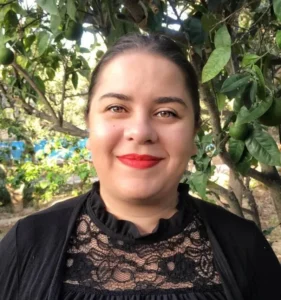

Maris Catania.
However, some operators are going the extra mile to curb and reduce such effects on players, enabling them to enjoy their hobby responsibly, and this is the case with the Kindred Group, a big name in the industry.
They have been combining intelligence and experience to create a safe environment for all players, acting proactively to assist players at risk while growing their business sustainably.
We had the opportunity to interview Maris Catania, Head of Responsible Gambling and Research at Kindred Group, and we got some answers about this innovative initiative.
We are extremely happy and impressed to hear about the incredible new goal the group has set, which consists in reducing revenue from harmful gambling to zero by 2025. So far they have already managed to reduce that number to under 5%.
Over the last 3 months of 2020 only 4.31% of Kindred’s revenue came from high-risk gamblers. This is a very positive step and paves the way for other to follow.
Q: Before we go into your goals, could you please tell us how the initiative to reduce revenue from high-risk players started?
Well, this is something that we always wanted to do. When we started focusing on a proactive system for harm minimisation years ago, the reason why we did this was to reduce harm. We do not want our consumers to suffer from gambling-related issues, but instead, we want them to enjoy gambling safely.
Q: What do you believe are the key reasons for your success so far?
The great commitment that we have seen from the different teams involved but especially the great commitment that we see from top to bottom. It is highly encouraging to see that this percentage is being reported as the key measure.
Q: You have developed your own behavioural monitoring system, the Player Safety – Early Detection System, or PS-EDS for short. Tell us how this project started, and exactly how PS-EDS works?
PS-EDS started as a conceptual idea back in 2010 when I was a psychology graduate and approached Ewout Keuleers with the idea to focus on derisking problem gamblers, as at the time, companies were working on fraudulent customers. As time passed, more momentum started being gained towards RG and PSEDS, with 20+ dedicated staff members and several teams collaborating to minimise the harm revenue.
PS-EDS works by looking into empirical research and this is employed to detect customers. Once a customer is detected, an expert looks into the case and tries to derisk the customer, either by helping them set a limit or by encouraging the person to take a break.
Q: How do you determine that a person is a low, medium or high-risk player?
The initial criteria determining the level of risk is made of more than 20 indicators as explained by Karim Chikh in our video on www.kindredgroup.com/zero. This is all based on research in the field of problem gambling prevention. After the risk is assessed, we start acting accordingly.
Q: At what point do you contact the player, and how does the conversation develop?
We will contact the customer either if the behaviour is too high risk or if the customer is being detected repetitively. The conversation is a genuine conversation where the customer service representative highlights the concern that we would have about the customer’s gambling behaviour. Through the use of motivational interviewing and empathy skills (through our extensive RG training) we aim to encourage behavioural change into the positive.
Q: What additional steps are taken from the casino to reduce harmful gambling? (Reducing deposit limits, time-outs, etc.).
We do sometimes interfere and may temporarily block or set up a limit for a customer. In extreme cases, we work closely with organisations such as Gamban so that consumers can have a break from all operators when need be.
Q: Do you believe continuing as you are right now, with detecting and supporting at-risk players is all that is needed to reach 0%, or does additional steps need to be taken?
I think our aim is to get as close to 0% as possible and we believe that this is possible. Additional steps would be from our end to engage with more external stakeholders such as reformed problem gamblers, treatment centres and affected others. These are the real experts.
Q: Is there a risk that removing all revenue from high-risk gamblers will hurt your business model?
Our business model is based on sustainable and ethical revenue, therefore our business model has no place to accept this revenue in the first place.
Q: You have previously worked with Betfilter to reduce the risk of under 18s being exposed to gambling advertisements. Could you talk us through the project, and the degree to which it was a success?
We had done a project called AdBlocker where with a few simple clicks the online gambling adverts would be blocked. It was quite successful at the time and we are continuing to expand in the technology area through initiatives with Gamban and other projects that will be revealed within the near future.
Q: You have taken it upon yourself to not just participate in, but host sustainable gambling conferences? Could you tell us a little more about how these conferences promote sustainable gambling and why you have chosen to play such a key part in them?
The idea started around 5 years ago where we realised that the responsible gambling message was not prominent enough in Malta. Therefore, we teamed up with the local treatment centre and organised the first ever responsible gambling conference in Malta. This was such a success that we started making this an annual thing and expanded its presence to other jurisdictions. The reason why we want to be a part of this is that we believe that by having conversations and discussions with other operators, stakeholders, regulators, academia and other organisations we can work together to minimise harm.
Q: If you reach 0% revenue from high-risk gamblers by 2025, will you be sharing your success formula with regulators or competitors?
This is no hidden secret. We are sharing everything we do as we go along.
Stay tuned for more exclusive insider interviews and play responsibly, always.
Discover the Latest Casino News



Alex is an expert in the field who writes on various subjects relating to online gaming, and he has been doing so for the last 9 years. Alex makes sure that readers have access to thorough and informative news coverage, addressing topics from the most recent developments to the latest trends in the casino industry.
Fact-Checked by Dhalia Borg, Head of Content
5 minread



